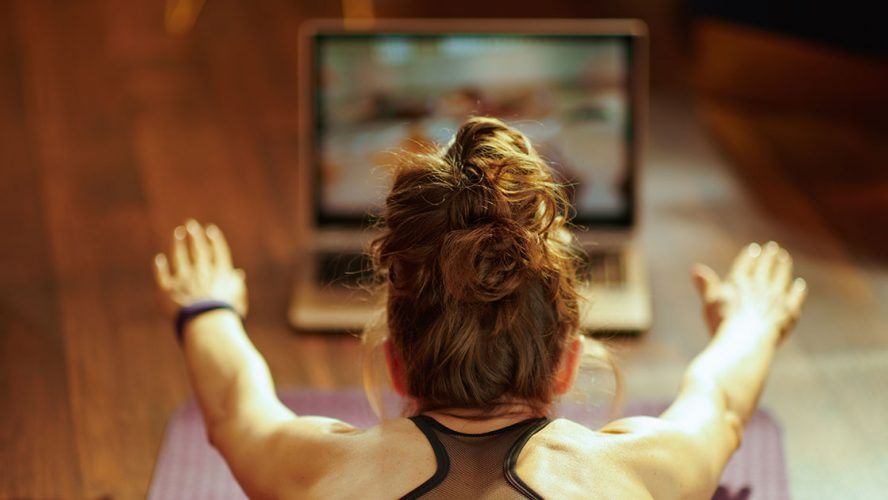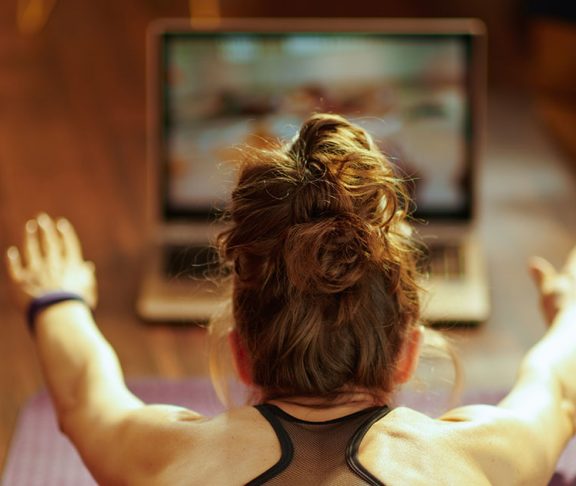
Sami Smith
Communications and Public Relations Assistant, IHRSA
Even if your health club is closed, or you can’t make it to a gym, staying active and healthy right now is not only practical—it’s essential! With the substantial spread of coronavirus and scientists pointing at obesity as a high-risk factor, this year has undoubtedly shown the importance of physical activity.
Unfortunately, the forced closures of nonessential businesses have put health and fitness clubs in the line of fire.
In the U.S., the health and fitness industry employs 800,000-plus Americans throughout over 40,000 clubs. Strict closures in more than 45 states left health clubs and workers with no other option but to adapt to the environment.
Although, every cloud has a silver lining. In this case, it’s that a considerable portion of the fitness industry—clubs and companies that provide exercise programming—has made a substantial pivot to offer exercise classes to the whole world—whether current gym members or not.
Now, clients and members can receive workouts, classes, and expert knowledge virtually. Giving people who may not have previously gone to a club the chance to join a fitness community.
Virtual Options Benefit Health & Wellness
Even as everyday life was interrupted, the fitness industry put a plan in place to stay in contact with members and keep them active. As health clubs were unable to provide members with gym access, club owners gave their members what they could. Industry leaders began offering on-demand workouts, nutrition advice, activity tracking, webinars for virtual coaching and community building, and much more—for free!
While quarantine and social distancing became routine, gym rats adapted exercises to fit with everyday life. Bodyweight workouts, resistance training, and using household items in place of free weights are great to stay active and fit at home.
The addition of a real-life trainer on-screen keeps you engaged and working hard. It’s the second-best recipe for success—behind actual fitness centers.
The world needs to be physically active. As the World Health Organization launched their #healthyathome campaign during this crisis, exercise was at the top of the list. Abundant research also proves that going to the gym is beneficial. For example, following a healthy diet and keeping active can:
- improve mood and energy levels,
- reduce the risk of chronic disease,
- help brain health and memory,
- and strengthen the cardiovascular and respiratory systems.
Community is the Core of the Fitness Industry
Keeping a positive mindset has been crucial since the pandemic hit for gym-goers, health and fitness club owners, and employees alike. Maintaining a community within health clubs has always been a crucial benefit for members and operators. It’s why people go to the gym, and because of that community, it’s why clubs are doing whatever they can to let members know that although the gym space itself is not available, members won’t be left to fend for themselves.
Health clubs are a place to relieve stress, engage in social interaction, and receive encouragement in your fitness goals. With health clubs closed, virtual workouts are offering that community.
It’s a common belief that the fitness industry is this large entity, but that’s not the case. A staggering 90% of health clubs are considered small businesses, and their owners just want to be an essential part of keeping their community healthy. Fitness club operators are your neighbors—your friends—and they care about sustaining happy and healthy members.
Virtual workout sessions are the best placeholder for health clubs during difficult times. They’ve proven just how many people rely on the gym and its aspect of a community to stay healthy and active. For now, it’s giving the fitness industry a fighting chance to survive.

